Figures & data
Figure 1 Chemical structures of (A) lung transplant immunosuppressant drug, tacrolimus, and lung surfactant mimic phospholipids, (B) dipalmitoylphosphatidylcholine, (DPPC), and (C) sodium dipalmitoylphosphatidylglycerol (DPPG).
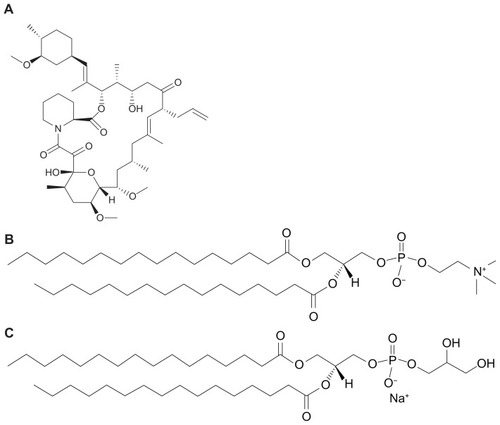
Table 1 Advanced spray-drying parameters in closed mode of pump rate, inlet temperature, and outlet temperature in the spray-drying process and resultant particle size of dilute organic solution advanced spray-dried tacrolimus dry powder inhalation particles
Table 2 Compositions and average particle size of tacrolimus lung surfactant mimic dry powder inhalation formulations by advanced co-spray drying from organic solution in closed mode
Figure 2 Scanning electron micrographs of (A) raw unprocessed tacrolimus, (B) spray-dried tacrolimus prepared at 10% pump rate, (C) spray-dried tacrolimus prepared at 25% pump rate, (D) spray-dried tacrolimus prepared at 50% pump rate, and (E) spray-dried tacrolimus prepared at 75% pump rate.
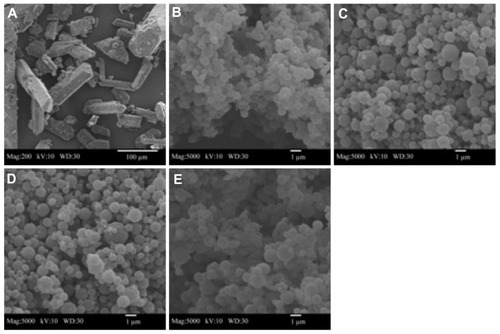
Figure 3 Scanning electron micrographs of (A) raw unprocessed tacrolimus, (B) tacrolipo25, and (C) tacrolipo75.

Figure 4 Differential scanning calorimetry thermograms at 5.00°C/minute heating scan rate of raw tacrolimus and organic solution advanced spray-dried tacrolimus for dry powder inhalation.
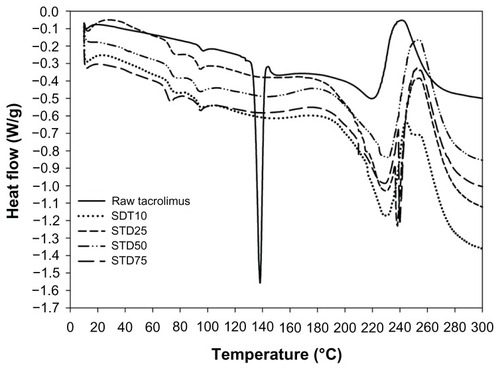
Figure 5 Differential scanning calorimetry thermograms at 5.00°C/minute heating scan rate of raw tacrolimus, pure dipalmitoylphosphatidylcholine (DPPC), pure sodium dipalmitoylphosphatidylglycerol (DPPG), and organic solution advanced co-spray-dried lung surfactant mimic inhalable particles (tacrolipo25 and tacrolipo75) for dry powder inhalation.
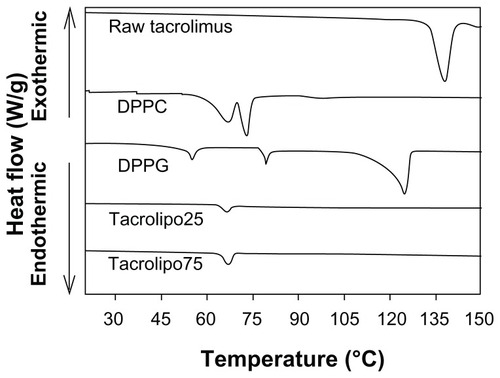
Figure 6 X-ray powder diffractograms of raw tacrolimus and organic solution advanced spray-dried tacrolimus for dry powder inhalation.
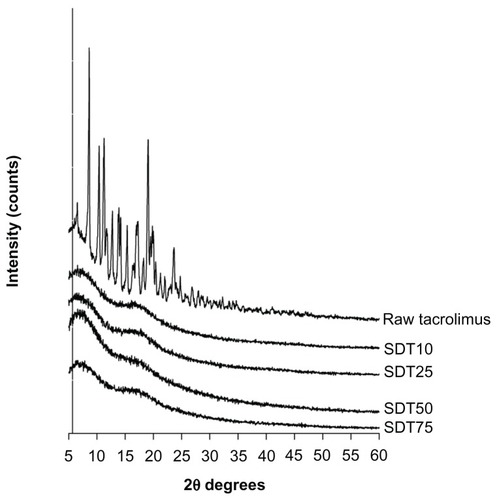
Figure 7 X-ray powder diffraction patterns of raw tacrolimus, pure dipalmitoylphosphatidylcholine (DPPC), pure sodium dipalmitoylphosphatidylglycerol (DPPG), and organic solution advanced co-spray-dried lung surfactant mimic particles (tacrolipo25 and tacrolipo75) for dry powder inhalation.
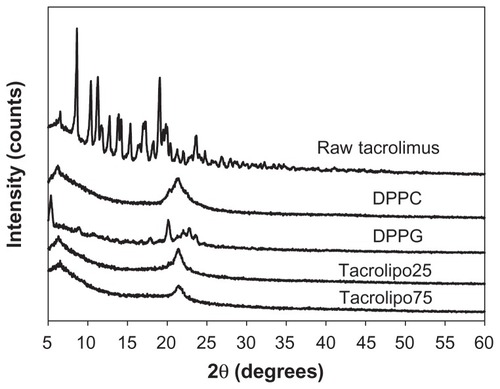
Figure 8 Cross-polarized light optical microscope images of the phase transitions for raw tacrolimus. The samples were heated from 25°C to 300°C at 5.00°C/minute. The temperature for each graph is (A) 24.9°C, (B) 133.8°C, (C) 137.1°C, (D) 139.3°C, (E) 140.9°C, (F) 142.8°C, (G) 150.3°C, and (H) 300.0°C.
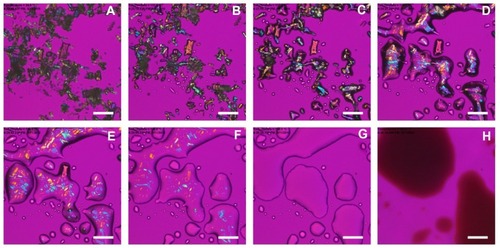
Figure 9 The effect of scanning rate on differential scanning calorimetry (DSC) thermograph of raw tacrolimus.
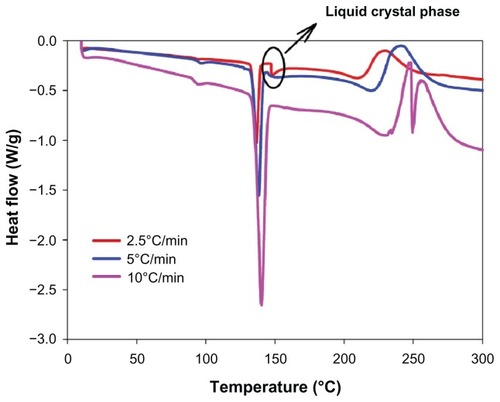
Figure 10 Cross-polarized light optical microscope images for the phase transitions of spray-dried tacrolimus prepared at 50% pump rate. The samples were heated from 25°C to 300°C at 5°C/minute. The temperature for each graph is (A) 25°C, (B) 85.1°C, (C) 92.1°C, (D) 94.1°C, (E) 98.6°C, (F) 100.6°C, (G) 120.4°C, and (H) 300.0°C.
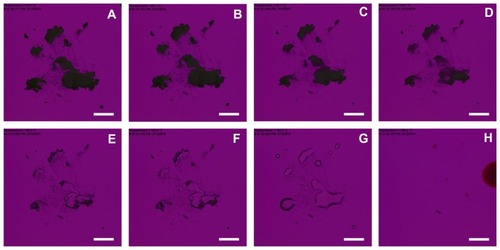
Table 3 Water content (w/w%) of tacrolimus before and after organic solution advanced spray drying
Table 4 Water content (w/w%) of tacrolimus, lung surfactant mimic phospholipids, and spray-dried powder inhalation formulations before and after organic solution advanced co-spray drying
Figure 11 Gravimetric water vapor absorption isotherms for raw tacrolimus versus organic solution advanced spray-dried dry powder inhalation tacrolimus at various spray-drying pump rates.
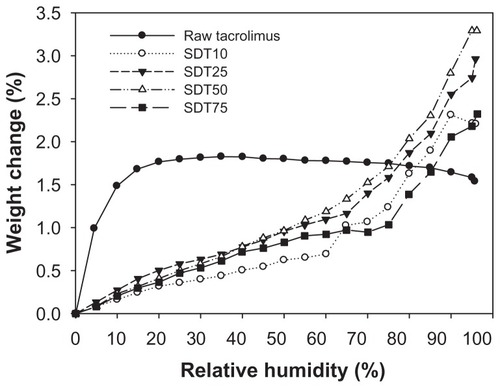
Figure 12 Gravimetric water vapor absorption isotherms for raw tacrolimus, pure dipalmitoylphosphatidylcholine (DPPC), pure sodium dipalmitoylphosphatidylglycerol (DPPG) and organic solution advanced co-spray-dried lung surfactant mimic particles of tacrolimus for dry powder inhalation (tacrolipo25 and tacrolipo75).
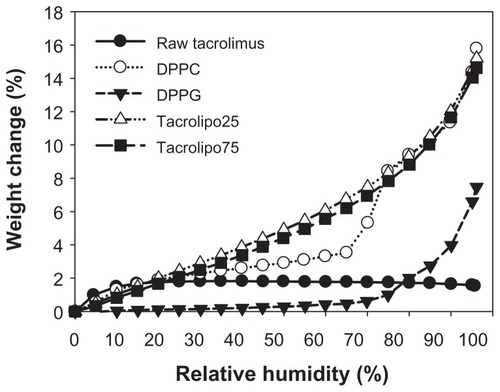
Table 5 The maximal weight change percentages by water absorption at 90% and 93% RH for raw materials and organic solution advanced spray-dried tacrolimus lung surfactant mimic particles for dry powder inhalation